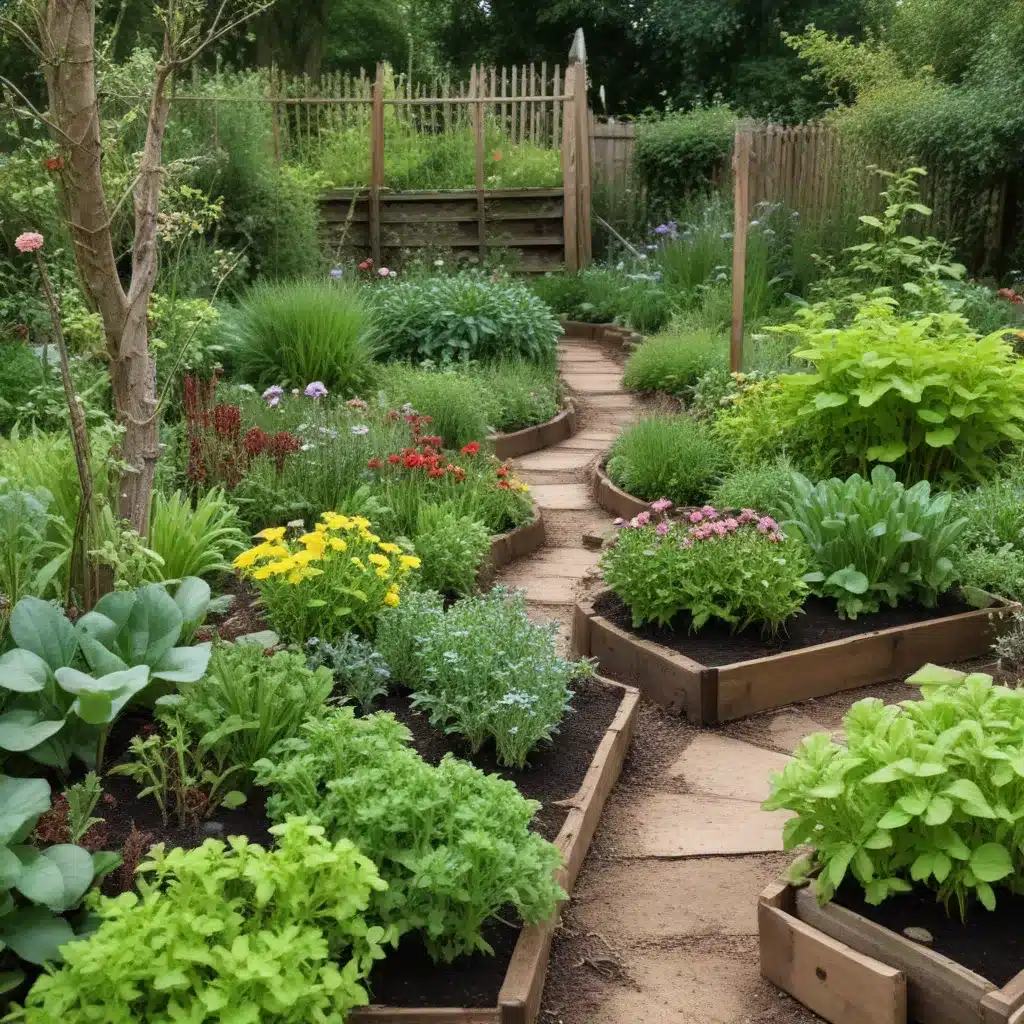
As gardeners, we are constantly evolving our practices to better align with the needs of our plants, our local environment, and the planet. One approach that has gained significant traction is regenerative gardening – a holistic framework that seeks to create self-sustaining, thriving ecosystems in our own backyards.
At the heart of regenerative gardening is a deep respect for the soil as the foundation of a healthy, productive garden. By minimizing soil disturbance, enriching it with organic matter, and encouraging diverse plant life, we can cultivate vibrant, resilient gardens that mimic the dynamics of natural ecosystems. This not only results in bountiful harvests, but also helps sequester carbon, support pollinators, and foster biodiversity.
Whether you have a small patio, a raised bed garden, or a sprawling backyard, incorporating regenerative techniques can elevate your growing experience and contribute to a more sustainable future. Let’s explore some of the key principles and practical projects you can implement at home.
Soil Health and Fertility
The foundation of any thriving garden is healthy, living soil. Regenerative gardeners focus on building soil organic matter through techniques like composting and the use of cover crops and green manures.
Composting your kitchen scraps, yard waste, and other organic materials returns vital nutrients to the soil, while also improving its structure and water-holding capacity. Avoid the temptation to “clean up” your garden in the fall – leave fallen leaves and plant debris to slowly decompose and feed the soil microbiome over the winter.
Cover crops like clover, vetch, and buckwheat can be planted in fallow beds to protect the soil, fix atmospheric nitrogen, and build organic matter when incorporated back into the earth. These “green manures” also help suppress weeds and attract beneficial insects.
Minimizing soil disturbance is another key tenet of regenerative gardening. Rather than tilling, which can damage soil structure and release stored carbon, use a broadfork or garden fork to gently aerate the soil without inverting the layers. This preserves the intricate web of roots and microbial life that are essential for nutrient cycling and water infiltration.
Plant Diversity and Polycultures
Monocultures – the practice of growing a single crop over large areas – can leave plants vulnerable to pests, diseases, and environmental stresses. Regenerative gardeners instead aim to create polycultures, where a diverse array of plants are grown together in a mutually beneficial arrangement.
Companion planting is a classic example – pairing plants that support each other through nutrient sharing, pest deterrence, and microclimate regulation. For instance, planting marigolds alongside your tomatoes can help repel harmful nematodes, while nasturtiums provide a decoy crop for aphids.
Intercropping and succession planting take this concept further by intentionally layering and rotating different crops in the same space. This not only maximizes productivity, but also mimics the diverse, multilayered structure of natural ecosystems.
Prioritizing native and pollinator-friendly plants is another way to enhance biodiversity in the garden. These species have evolved alongside local wildlife, providing essential food and habitat resources. Consider incorporating plants like prairie smoke, wild bergamot, and liatris that offer year-round interest and support a thriving community of beneficial insects.
Water Conservation and Management
Water is a precious resource, and regenerative gardeners strive to be as efficient and responsible with its use as possible. Strategies like rainwater harvesting and greywater irrigation can significantly reduce the demand for potable water.
Rainwater can be collected in barrels or cisterns and used to quench the thirst of your plants. Mulching the soil surface with organic materials like wood chips or straw further reduces evaporation, keeping moisture where it’s needed most.
For those with access to greywater (lightly used water from sinks, showers, and washing machines), investing in a simple greywater diversion system can channel this resource directly into the garden. Just be sure to use eco-friendly, salt-free soaps and detergents to avoid harming your plants.
Integrated Pest Management
Regenerative gardeners take a holistic approach to pest control, focusing on building a healthy, biodiverse ecosystem that can naturally suppress unwanted visitors. Rather than reaching for chemical pesticides, they rely on beneficial insects and organic control methods.
Attracting predatory insects like ladybugs, lacewings, and parasitic wasps can help keep aphid, mite, and caterpillar populations in check. Providing suitable habitat through the inclusion of flowering plants, undisturbed soil, and overwintering sites encourages these beneficial organisms to take up residence in your garden.
If pests do become problematic, try organic sprays made from natural ingredients like neem oil, garlic, or capsaicin. You can also employ physical barriers like row covers or sticky traps to protect your plants without harming the broader ecosystem.
Designing a Regenerative Landscape
Regenerative gardening is not just about the individual growing practices – it’s about adopting a holistic, systems-based approach to landscape design. Drawing inspiration from permaculture principles, you can create a resilient, self-sustaining outdoor oasis.
Start by analyzing your site’s zoning and sectors – where are the sunny, shady, and wind-exposed areas? Use this information to strategically place your plants, water features, and other elements. Incorporate keyline design and swales to slow and infiltrate rainwater, reducing runoff and erosion.
Embrace the concept of edible landscaping, integrating productive plants like berry bushes, fruit trees, and perennial herbs alongside your ornamental flowers and shrubs. This not only provides a bounty of nutritious foods, but also creates a diverse, layered habitat that supports a wide range of beneficial organisms.
By prioritizing ecosystem services like carbon sequestration, pollination, and nutrient cycling, your regenerative garden can have a positive impact far beyond its borders. Each thoughtfully placed plant, each carefully managed resource, and each moment of observation and contemplation contributes to the overall health and resilience of the local environment.
Regenerative gardening may seem like a departure from traditional approaches, but the rewards are immense. By working in harmony with nature’s cycles and principles, you can cultivate a lush, productive, and self-sustaining oasis right at home. So why not get started on your regenerative journey today? Your plants, pollinators, and the planet will thank you.


